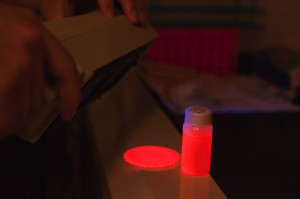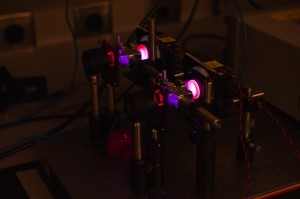LEDs are the most efficient and environmentally friendly lighting solution on the present market. Though there are few disadvantages related to the up-to-date technology – a higher price and a colour spectre. Why? LEDs emit a light when electrons move through a semiconductor. The expensive substances known as rare-earth elements, especially phosphors, are necessary for the process. They help to soften the harsh blue light that is naturally emitted by LEDs. These elements are hazardous to extract and process, so that the LEDs production becomes expensive.

The researchers at the University of Washington, who later formed the company LumiSand, had developed a new material to be involved into the LEDs in order to make them cheaper and even greener – silicon-based nanoparticles. These particles soften the blue light and help to create the white light that resembles the sunlight more.
The silicon-based nanoparticles are being extracted from the sand, which is easier to find and what is more important, it is cheaper than phosphors. Through etching the nano-sized particles from wafers of silicon, the element, which usually does not emit the light, starts to glow if the particle becomes smaller than 5 nanometres. The surface is reinforced through a wet-chemistry process. When the red-emitting silicon nanoparticles are added into the LED bulbs, the light becomes softer and warmer in hue. The research continues and the researchers in LumiSands plan to improve the red technology before moving on to other colours such as yellow and green, which will enable LEDs to cast a white light with no rare-earth elements.
Since the production of LEDs is still quite expensive, the manufacturers keep looking for some cheaper materials. Silicon-based nanoparticles have two important advantages: comparing to incandescent bulbs there are more efficient while still emitting the light easy to our eyes, and do not contain mercury traditionally involved into the fluorescent bulbs and posing health and environmental concerns.
For more information, visit this website.
SOURCE:
- University of Washington: Silicon-Based Nanoparticles Could Make LEDs Cheaper, Greener To Produce, pubished in Lighting Technology, September/October 2013

